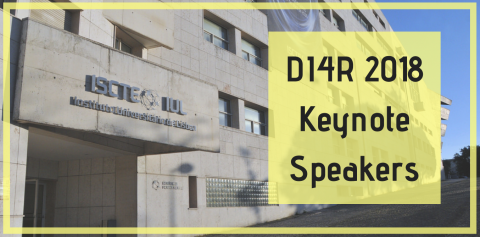Cloud procurement
Date:
Wednesday, September 28, 2016 - 16:00
Chair: David Foster, Bob Jones
This session will explore the procurement of cloud services for the research and education community.
Agenda:
Introduction: David Foster (CERN)
David will explain the objectives of the session.
Lessons learned: Sara Garavelli (Trust-IT)
Sara will give an overview of lessons learned from the PICSE project and highlight a number of identified barriers to the procurement of cloud services.
Helix Nebula Science Cloud procurement activities: Bob Jones (CERN)
Bob will trace the cloud procurement trails performed within the context of the Helix Nebula Initiative and the on-going Pre-Commercial Procurement action undertaken by a group of 10 of Europe’s leading publicly funded research organisations.
GÉANT pan-European tender for IaaS services: Enzo Capone (GÉANT)
Enzo will explain the activities undertaken by GEANT and the NRENs to support the connection of a variety of cloud service providers. He will provide an overview of the framework agreements being established with suppliers of Infrastructure as a Service (IaaS) solutions as part of a European tender, launched on 20 April 2016, resulting in a portfolio of services for the community to consume.
Structured Discussion
A set of questions addressing key aspects of cloud service procurement processes and their impact for the research and education community will guide this structured discussion with the audience:
- Are you willing to use commercial cloud services to support your research activities?
- Should commercial cloud services be part of a joint service catalogue? (explanation of joint catalogue by Sergio Andreozzi)
- What are the most important cloud services for your research activities?
- Do you see any barriers to procurement of cloud services that have not been discussed today?
Summary: David Foster (CERN)
The key points raised by the presentations and ensuing discussion will be summarised by David.
Background about the procurement session:
The publicly funded research sector faces unsustainable demand for computing and networking services to deliver the promise of Open Science. Cancer research is a typical example. Over a million estimated genome datasets from cancer patients will become available to the life science community by 2019 . This is a big step forward that will create enormous opportunities for cancer research.
However, no single European research centre will be able to provide the necessary infrastructure to analyse the hundreds of thousands of genomes, to store and access them securely or to utilize these data efficiently for translational research and downstream medical application.
Researchers need more cost-effective approaches to collecting, processing, distributing and re-using the rapidly growing amounts of data being produced by scientific instruments.
Cloud computing is disrupting the way IT resources are provisioned for research communities. Traditionally, the IT departments of research organisations have developed and operated in-house the services that their users required. This situation is now being disrupted with commercial cloud providers offering off-the-shelf innovative services, which are in many cases initially made available as a free trial. There are many instances of users by-passing their traditional service provision channels to get these commercial on-demand services. This could be considered as a form of shadow IT where users act independently and may not be aware of existing policy and security boundaries of publicly funded research organisations. This shadow IT innovation represents an opportunity to introduce change, but users must be fully educated on policy aspects including data protection, intellectual property rights and applicable legislation.
In-house resources, publicly funded e-infrastructure and commercial cloud services are not integrated to provide a seamless environment. Users should be able to make a more effective use of the in-house resources by integrating them, when needed, with services offered by public and private cloud providers. Today, moving data and applications between multiple cloud service providers is not always easy and often involves high costs associated with a high risk of vendor lock-in.
Current organisational and financial models are not appropriate anymore. With cloud computing, ICT costs become an integral part of the cost of doing science. Procuring ICT services traditionally involved one-off purchases of hardware or software with additional support and maintenance costs. Cloud service models avoid up-front costs in exchange for recurring and often variable service charges. Cloud infrastructure and other 'as-a-service' offerings combine many indirect costs into a single service payment based on use and can enable more flexible pricing models such as per core/hour or per request/transaction. This means that there may be a wide range of financial implications that need to be considered especially when comparing traditional on-premises solutions with cloud services.
The new way of procuring cloud services is also a matter of skills and education. With no standard framework in place, many organisations do not have skilled or trained staff in place to procure cloud services. This should not be underestimated.
Legal impediments exist: Legal challenges can be divided into two categories: challenges common to most cloud services (e.g. applicable law, jurisdiction & dispute resolution, data protection, liability, contractual framework, data portability, interoperability); and public-sector specific challenges (e.g. public procurement legislation related concerns, etc.) . These challenges result in a series of legal barriers that are mainly related to the fragmented and diverging patchwork of conflicting national laws resulting from local implementation of European legislation, with the European Data protection legislation as an area of focus.
Projects contributing to the subject
This procurement session builds on the work and results of several projects:
PICSE a recently completed Coordination and Support Action funded by Horizon 2020. Over an 18 months period, PICSE set up a European Procurers’ Platform to raise the level of understanding in issues related to the procurement of cloud services. Based on an initial set of use cases from the science domain, this unique repository of information has supported a network of procurers with tips and recommendations related to cloud procurement and promoted the cloud services market. In addition, it helped all the stakeholders involved in the cloud procurement field to understand the implications of the work going on under the EU cloud computing strategy and the Digital Single Market , with particular focus on the European Open Science Cloud.
HNSciCloud is a European Pre-Commercial Procurement (PCP) project co-funded via Horizon 2020. Driven by the commitment of leading research organisations from across Europe, HNSciCloud brings together commercial cloud service providers, publicly funded e-Infrastructures and the buyers’ in-house resources to build a hybrid cloud platform on top of which a competitive marketplace of European cloud players can develop their own services for a wider range of users.
Over the past year, GÉANT conducted a Pan-European tender for IaaS services: a collective invitation to suppliers to submit a bid to supply their services. This tender for 36 countries aims to allow Research and Education institutions to consume the cloud in a safe, easy and predictable way, where services meet European and national regulations, have attractive pricing, are connected to the community’s networks and identity management capabilities and can be purchased in a controlled and transparent manner.This demand aggregation in GÉANT, of the NRENs and their close to 10.000 participating institutions, creates a substantial single digital market. There was a strong interest in the tender from suppliers. More than 100 companies registered for the procurement
EGI-Engage aims to accelerate the implementation of the Open Science Commons by expanding the capabilities of a European backbone of federated services for compute, storage, data, communication, knowledge and expertise, complementing community-specific capabilities. One of the projects objectives is to evolve the EGI Solutions, related business models and access policies for different target groups aiming at an increased sustainability of these outside of project funding. With e-Infrastructures evolving towards service-oriented provision with on-demand allocation and pay-for-use capabilities, there is an opportunity for analysing and revising the procurement process for e-Infrastructure services. Currently publicly funded resource providers and their users lack the knowledge and mechanisms to collectively bid within a public procurement process. EGI-Engage will analyse opportunities and barriers for cross-border procurement of e-Infrastructure services and identify best practices that could enable RIs or large research collaborations to acquire services to support their research agenda collectively.
Target Audience:
The session will provide valuable input for end-users, public and commercial service providers, funding agencies and Research Infrastructures.
Benefits for Audience:
The audience will benefit from the opinions of key actors in the e–infrastructures landscape, funding agencies and Research Infrastructure operators on crucial questions concerning procurement of e-infrastructures services which are impacting the European Research Area. Having heard the opinions of the key actors, the audience will have the opportunity to express their views.
The results of this session will contribute to a public written report identifying opportunities, barriers, use cases and best practices for cross-border procurement in the European public research sector that will be published by the EGI-Engage project.



